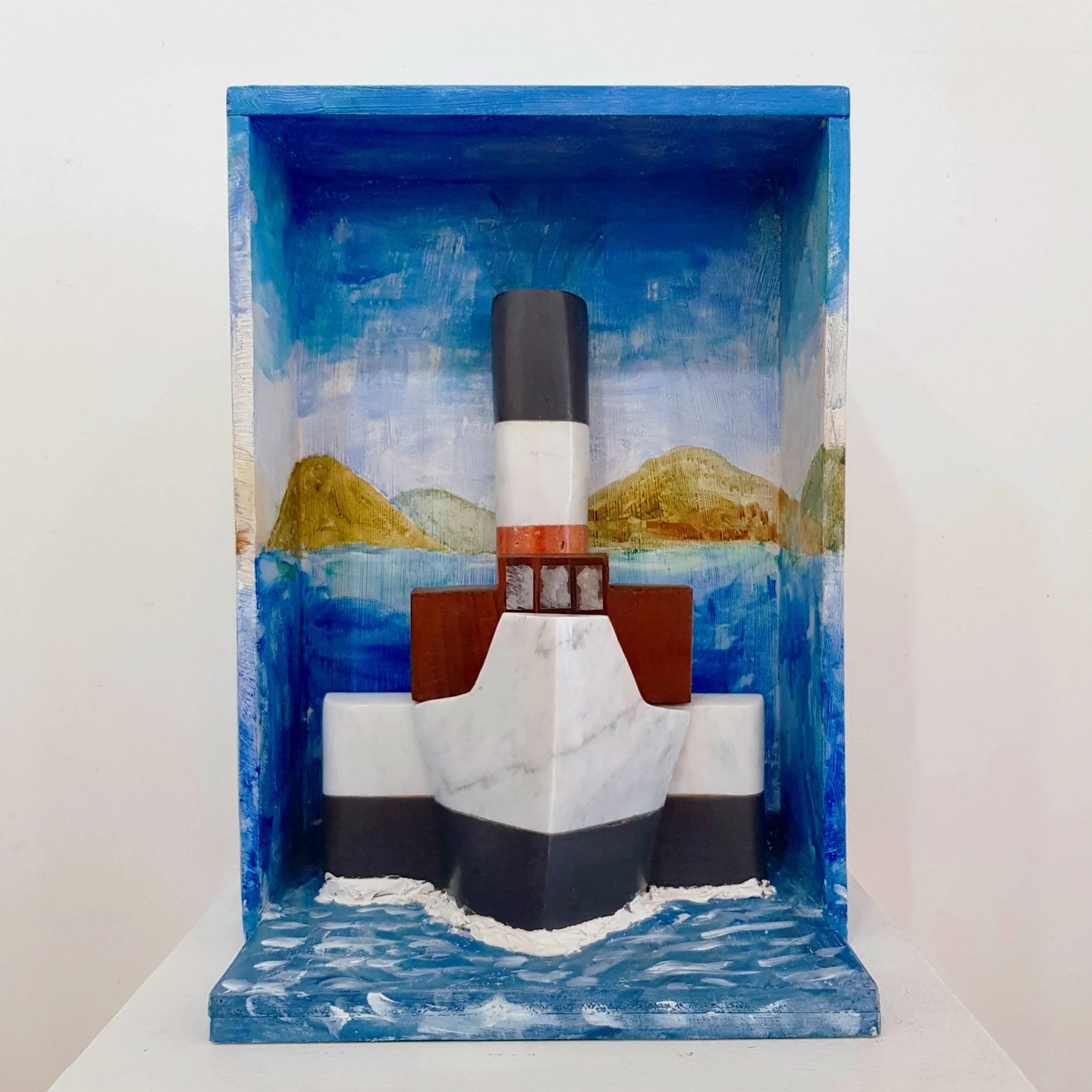Zandra Rhodes' Pocket Treasure
14 April 2022
Fashion and textile designer, Zandra Rhodes tells us about a work of art with particular meaning to her, a quilted dinner service by artist Carol McNicoll - the next instalment of our series looking at different people’s ‘pocket treasures’.
Joe Lloyd
Joe Lloyd is a journalist who writes about architecture and visual art for The Culture Trip, Elephant, and The Economist's 1843 magazine, among others.
Quilted dinner service by Carol McNicoll, 1971.
Image courtesy of Zandra Rhodes.
As the 1960s turned into the 1970s, a young graduate called Carol McNicoll spent a summer working at the Paddington atelier of Zandra Rhodes, then establishing herself at the heart of radical London fashion. “When she came to the end of her holidays,” Rhodes recalls, “I said ‘what are you doing next?’ She was going to the Royal College of Art, and I got her to show me her pottery. When she came to her major task in her last year, I commissioned a whole quilted dinner service. It’s one of the most magnificent things I own.”
McNicoll is now one of the most garlanded ceramicists in Britain. She specialises in decorative slipware with collage-like patterning, asymmetrical forms and illusionistic elements. Her remarkable work includes plates that partially resemble cabbage leaves, a milk jug held on the back of a horse and bowls that look like fabric samples appended together.
In one sense, it might be said that her work harks back to the extraordinary trompe l’oeil ceramics of the Renaissance, like the fauna-covered works of Bernard Palissy. But McNicoll’s work is also hugely contemporary, colliding ideas from history, modern art and popular culture into a distinct style of its own. In this, it has affinities with Rhodes’ own eclectic work in fashion and textiles, which draws on patterns and forms from across the world.
Quilted dinner service by Carol McNicoll., 1971.
Image courtesy of Zandra Rhodes.
The 1971 dinner service bears the hallmarks of McNicoll’s later work. It is a full 12-person service, with square dining plates, serving bowls, soup bowls and side plates. Each piece resembles a cushion, replete with creases and recesses. Hard ceramic takes on the traits of soft bedding. “It's so clever,” says Rhodes, “the way she managed to get this squashed sort of shape. You want to just touch it and stroke it.”
The china is decorated with Rhodes’ own Button Flower print, in a further allusion to fabric. “It's flowers,” she explains “where in the middle, instead of stamens, they have a button — they were sewn on to stay on the fabric.” Translated into china, the flowers jump out in red, blue and yellow, primary colours that lend the set a Mondrian-esque aspect.
Rhodes also enjoys McNicoll’s work for its combination of aesthetic and functionality: “There's something so wonderful about china. We eat off it but often we don't even notice it, or realise what a treasure or how amazing it is.” The service is a living collection of objects. For years it was used for dinners, in a variety of orientations, dazzling guests. But it had its downsides. “They were horrible to wash!”, Rhodes explains,”I didn't have a dishwasher in those days.”
The service is now retired from active use. It instead enjoys pride of place on a new set of glass display shelves, fitted around the windows of Rhodes’ pink-walled penthouse above the tangerine-orange Fashion and Textile Museum. Rhodes has resided in the building, which she commissioned from the leading Mexican architect Ricardo Legorreta, since 2003. Transformed from a former warehouse, it glows like a beacon among the London stock brick surrounds of Bermondsey Street.
The area has changed enormously since Rhodes arrived. “When I first moved in,” recounts Rhodes, “people would say ‘are you sure you’re alright working here?’ Life has changed so much. It’s a really vibrant area. And I feel extra-vibrant in my building, with its Mexican pink and orange.” The penthouse is equally colourful within. Its main open plan space has a rainbow-coloured floor. Artworks and objects are everywhere. “I’ve just got objects that collect dust,” says Rhodes.
There are numerous ceramics, including further works by McNicoll, such as a flesh pink tea set with hands for saucers. “I’ve got her work,” Rhodes explains, “and I've got works by Kate Malone, and then strange ones that I’ve picked up.” The centre of her circular table displays a collection of about 200 rocks, including geodes, pebbles, pieces of agate and eucalyptus seed.
For Rhodes, these objects provide decoration, delight and even inspiration. “I think that one collects beautiful things, or things that you see beauty in. Then you come to a day when you’re stuck and you don’t know what else you’re going to do. And then one of the things influences the next collection.”





















